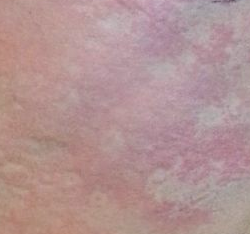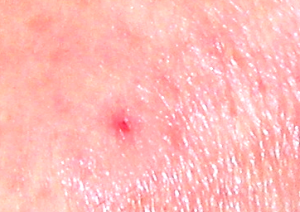Yellow jackets are wasps belonging to the Dolichovespula and genera Vespula family and occurring in North America. They are yellow and black just like honey bees, while some may be black in color or feature a reddish abdomen. Yellow jackets can sting without any incitement; these predatory insects do not leave their stingers behind and hence can and continue to sting many times.
Venom gets injected into the body during yellow jacket sting, thereby causing symptoms like pain, redness, itchiness, and swelling. Some people may suffer from life-threatening anaphylactic allergic reactions to yellow jacket stings. Minor cases can be resolved with first aid and home remedies, while severe reactions to the sting may require emergency medical care.
Symptoms of a yellow jacket sting and reaction
Some of the common signs and symptoms of a yellow jacket sting are listed below:
- Local reaction: This reaction usually occurs just after the sting. The associated symptoms often persist for only a few hours, but may continue to nearly 7 days. The affected area may elicit redness and with varying degrees of swelling. Swelling usually does not subside when the stinger of the yellow jacket is left on the sting site.The sting site may also be warm and tender to touch as well as be itchy. Bigger local reactions may feature fatigue, nausea, and swelling which may spread to surrounding areas. These reactions are normal and not a symptom of any type of allergic reaction.
- Toxic reaction: It refers to reactions to the toxins present in the venom injected into the body via a yellow jacket sting. It is different from an immunologic reaction. People may get stung multiple times when they disturb a yellow jacket colony and this causes the passage of large amounts of venom into the person’s body.Toxic reactions may be marked by symptoms like headache, fever, vomiting, nausea, dizziness, diarrhea, convulsions, and fainting, etc. Allergic reactions like hives or skin rashes are rare in such cases. People who experience toxic reactions may have an increased risk to suffering from allergic reactions to yellow jacket stings in the future.
- Systemic allergic reactions: Production of IgE antibodies by the body to counter the effects of the venom of yellow jackets is what causes allergic reactions to the stings. Systemic allergic reactions to yellow jacket sting are marked by symptoms like flushed skin, hives, swallowing difficulties, weakness, tightness in chest, confusion, swollen tongue, and slurred speech. Life-threatening anaphylactic allergic reactions may cause breathing difficulties, circulatory issues, and low blood pressure, which may sometimes lead to cardiorespiratory arrest and fatalities. Hence, allergic reactions need to be immediately treated.
- Delayed reaction: In this, the symptoms of yellow jacket sting occur a few days or even weeks after the sting. It is rare and only 0.4% of all insect stings cause delayed reactions. The symptoms include inflammation of blood vessels, kidneys, nerves, and brain. Serum sickness may occur in 7 to 10 days after the yellow jacket sting; it is marked by itching, skin rash, fatigue, fever, swollen lymph nodes, and pain in the joints.
Treatment of yellow jacket sting
Mild cases of yellow jacket sting can be treated with first aid and home remedies as follows:
- Take patient away from the nest to a safe place without any yellow jackets.
- If the stinger is lodged in the skin, do not squeeze or pull it out as it can cause the venom to spread and increase pain and swelling. Instead use a dull knife or a credit card, etc. and scrape in the opposite direction of the sting to remove the stinger.
- Use soap and alcohol or peroxide to clean the sting site. Then use cold compresses or apply ice to quell the pain and swelling. Later, apply hydrocortisone cream to alleviate itching.
- Wet a cotton ball in ammonia and dab on site to ease itching.Application of a paste of water and baking soda also helps find relief.
- Other remedies include an Epsom salts bath to reduce itching, pain, and swelling; ibuprofen or other OTC painkillers to decrease inflammation; application of water and soil mudpack to remove the venom; and neutralization of venom via use of meat tenderizer paste.
Moderate to severe cases of yellow jacket stings have to be medically treated as follows:
- OTC topical antihistamines may be used to alleviate itchiness. Diphenhydramine may help reduce swelling. Doctors may prescribe other medications if OTC drugs do not work.
- Increased swelling, delayed reactions to yellow jacket sting, and infection of the sting site need to be checked by a doctor. Infections are marked by prolonged swelling, pus formation, and red streaks on the affected area.
- Patients suffering from an anaphylactic reaction may be given epinephrine injections. Emergency treatment includes, loosening all tight apparels; placing the feet at a higher level than the head; turning the patient to the side to prevent aspiration; and initiation of CPR if needed.
Yellow Jacket Sting – Pictures


